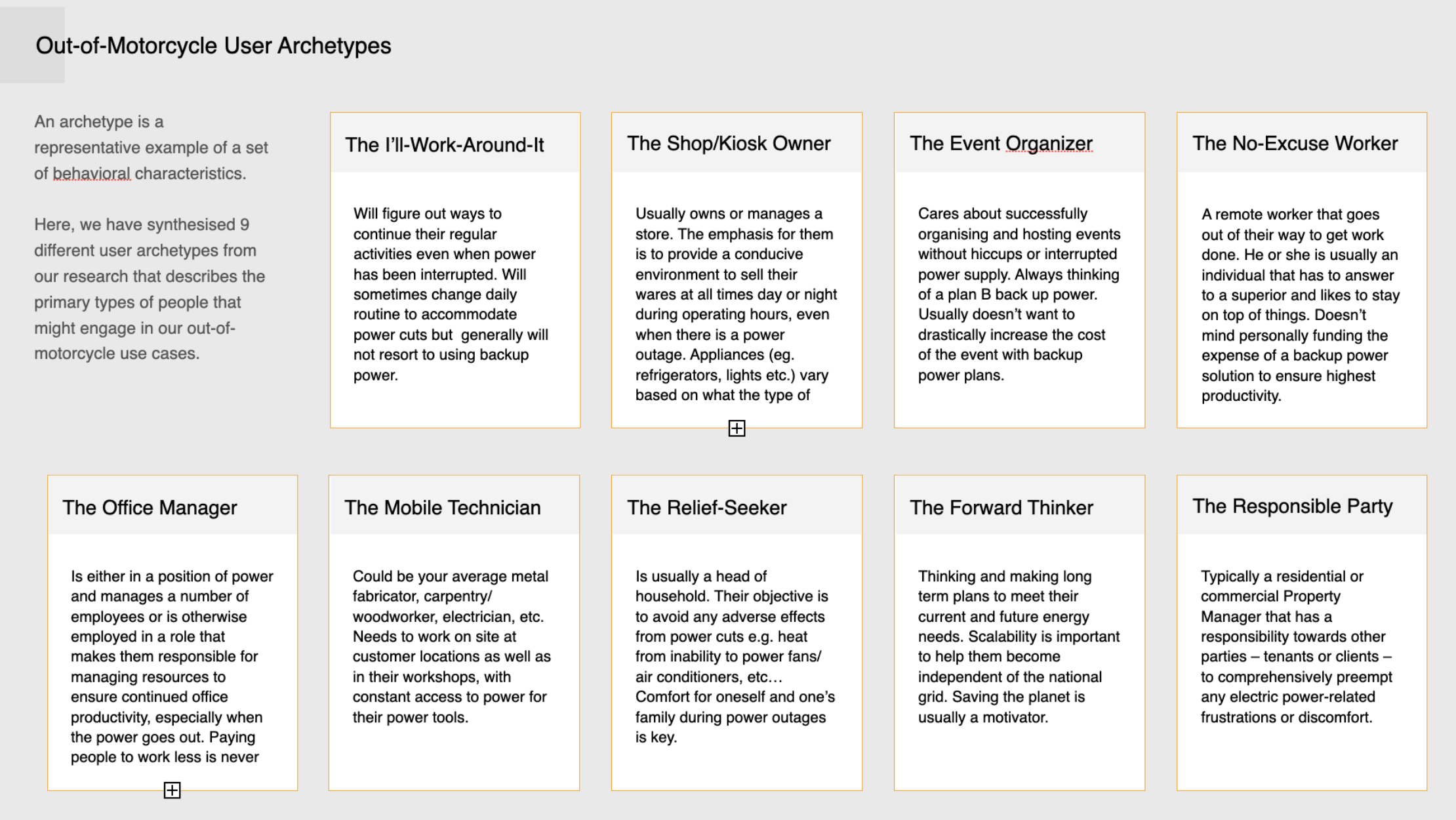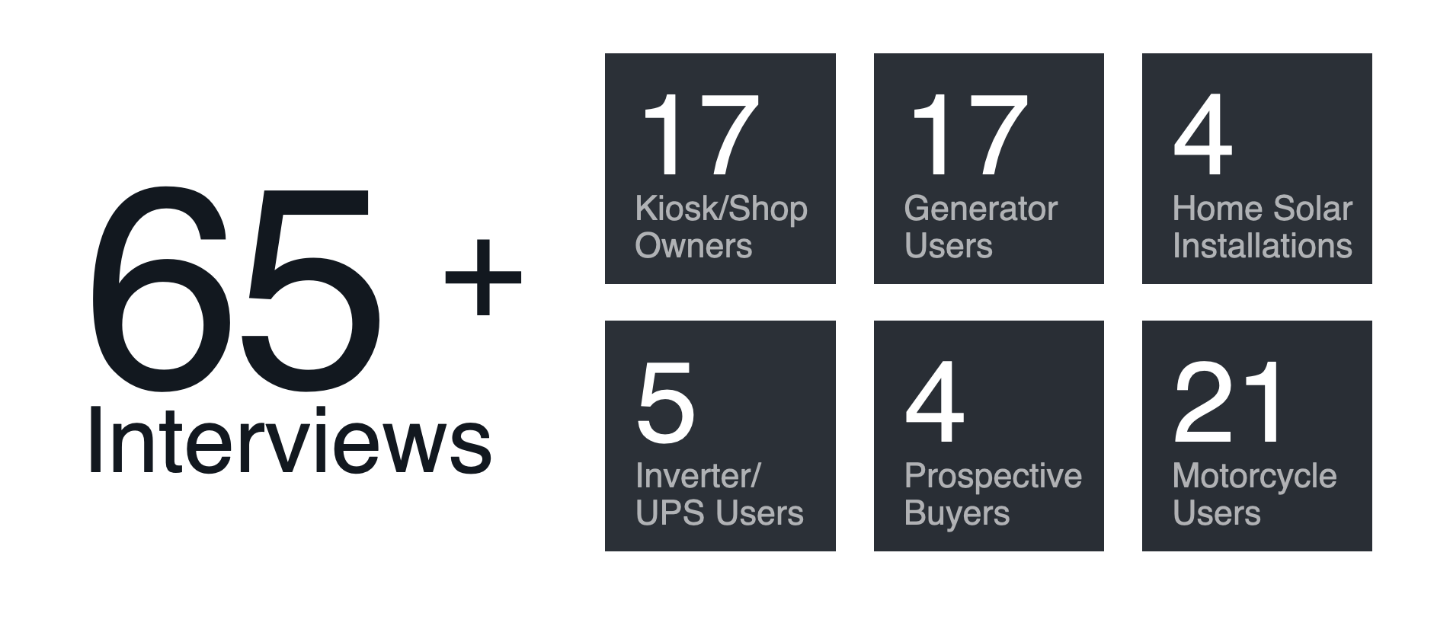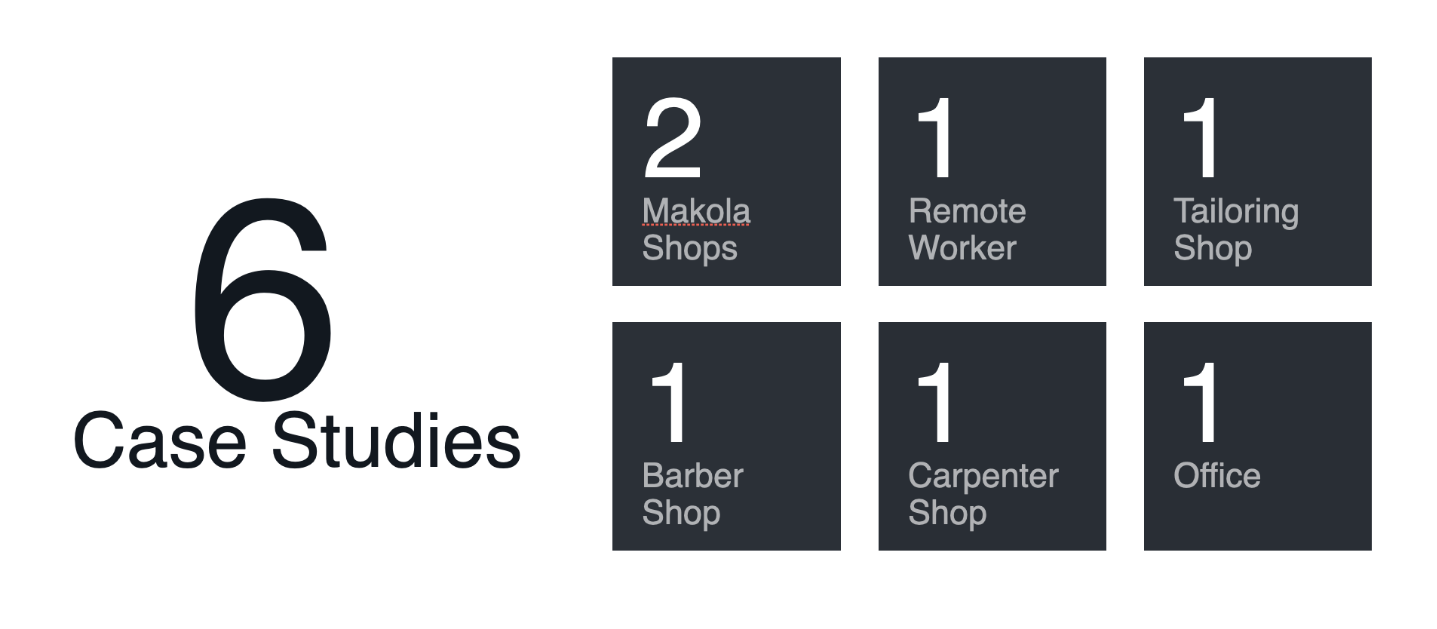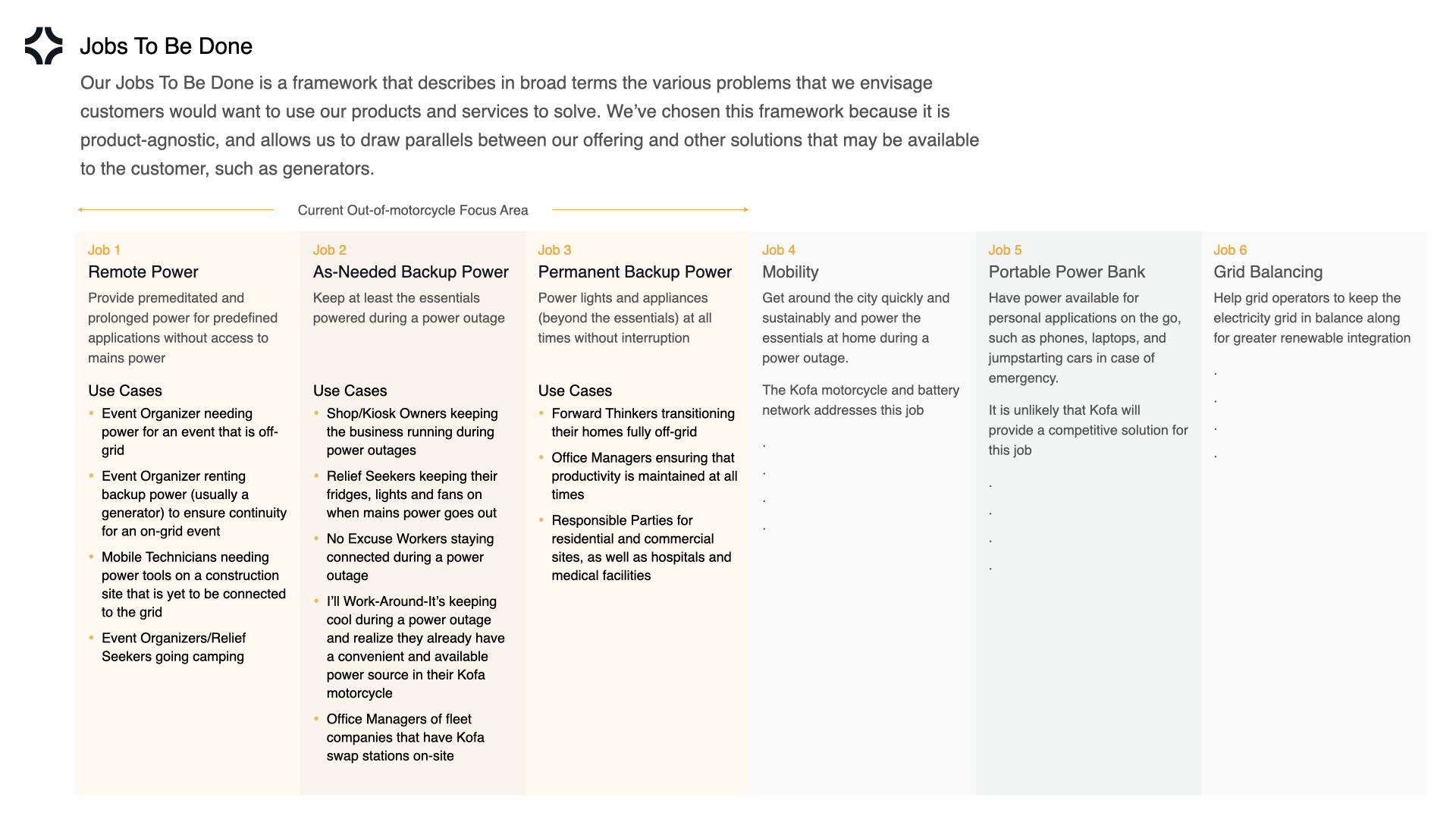Phase 3
Data Analysis & Insight Generation
The research insights reveal a complex landscape of backup power needs, where users struggle with frequent outages, diverse energy requirements, and technical challenges. Users across various commercial settings, from barbershops to kiosks, grapple with accurately estimating their power loads and often resort to trial-and-error methods with inverters.
While battery power is perceived as more stable and quieter than generators, installation complexity and safety concerns remain significant hurdles. Cost is a primary consideration, with some users already investing in alternative power solutions. Interestingly, users often ignore recommendations when testing appliances, highlighting a gap between intended use and actual behavior. The findings also underscore the need for higher inverter capacities and improved wiring quality to address fire hazards. Overall, these insights point to a market ripe for innovation in user-friendly, safe, and cost-effective backup power solutions that can cater to the diverse needs of Accra's commercial sector.
This is some text inside of a div block.
Insights are organised here according to the phase in the existing customer journey.

Synthesizing psychographic insights and data points into User Archetypes






